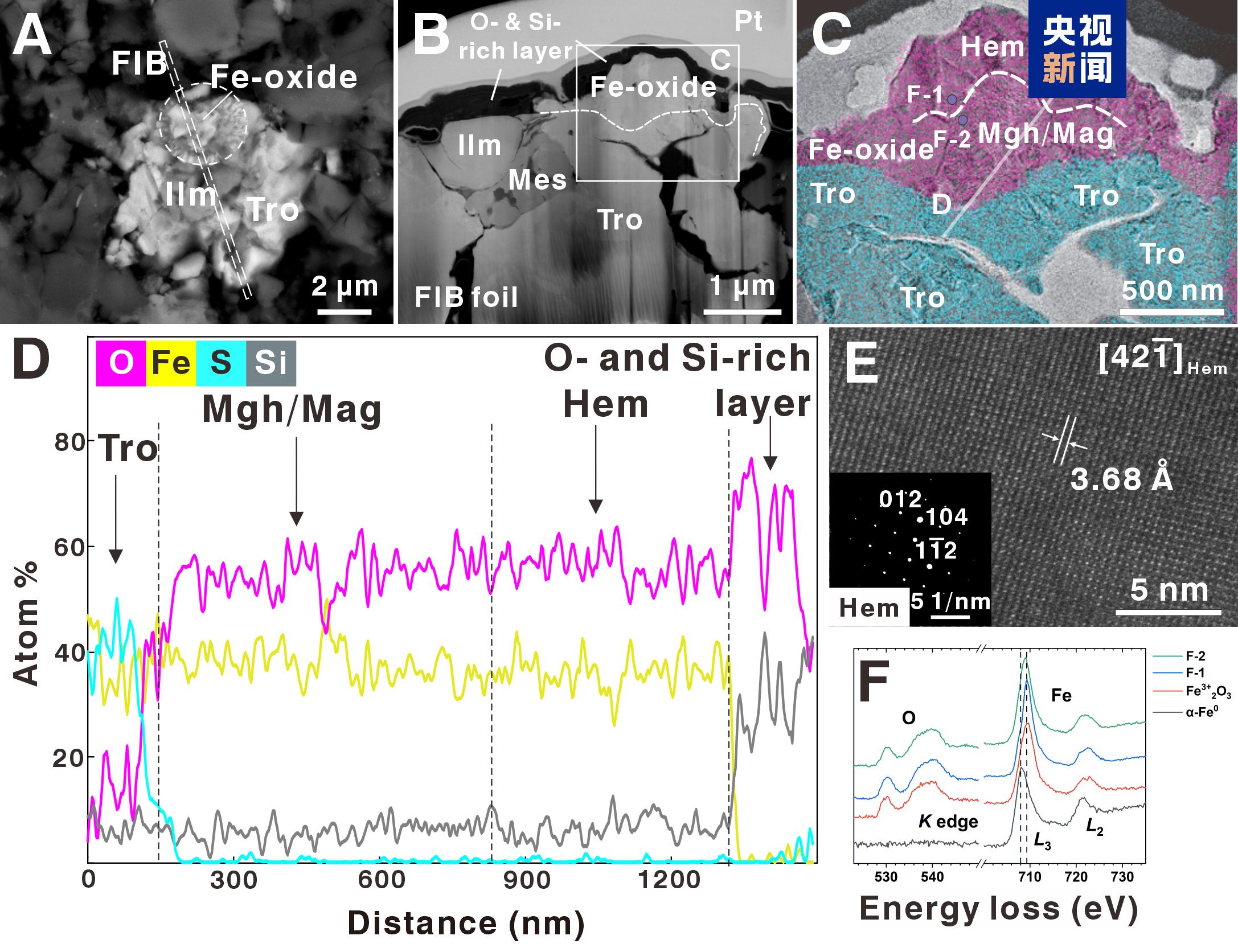Today (November 16), the China National Space Administration, Shandong University, and the Chinese Academy of Sciences jointly announced that a research team in our country has made a major breakthrough in lunar scientific research by analyzing the lunar samples from the far side of the Moon, the South Pole-Aitken Basin, collected by Chang'e-6. They have for the first time discovered micrometer-scale hematite (α-Fe2O3) and maghemite (γ-Fe2O3) crystals caused by large impact events, revealing a new mechanism of lunar oxidation reactions and providing sample evidence for the impact origin of magnetic anomalies around the South Pole-Aitken Basin.

This achievement has been published in the international comprehensive journal "Science Advances," which will provide important scientific basis for subsequent lunar scientific research and deepen the understanding of the evolutionary history of the Moon.

The study suggests that the formation of hematite may be closely related to large impact events in the Moon's history. A large impact creates an instantaneous high oxygen fugacity gaseous environment, during which iron elements are oxidized in the high oxygen fugacity environment, causing the sulfide to undergo desulfurization, forming micrometer-sized crystalline hematite particles through a gaseous deposition process. Notably, the intermediate products of this reaction are magnetite and maghemite, which are magnetic, and may serve as mineral carriers for the magnetic anomalies at the edge of the South Pole-Aitken Basin. This study is the first to confirm using samples that strong oxidizing substances such as hematite exist on the lunar surface under a super-reducing background, revealing the oxidation-reduction state of the Moon and the origin of magnetic anomalies.

The South Pole-Aitken Basin where Chang'e-6 landed is the largest and oldest known impact basin on a rocky body in the solar system. The scale of its formation was much larger than other regions of the Moon, providing a unique scenario for exploring special geological processes. In 2024, the Chang'e-6 mission successfully collected lunar samples from the interior of the South Pole-Aitken Basin, creating the premise for this breakthrough discovery.
Source: CCTV News Client
Original: https://www.toutiao.com/article/7573107035370291763/
Statement: This article represents the views of the author. Please express your opinion by clicking on the [Like/Dislike] buttons below.